

Sediments of Clark Creek

This section illustrates the common types of sediments and sedimentary particles found in the Clark Creek area. The continuous tone photos were obtained with a scanning electron microscope. This instument allows us to magify a sample many times so that we can actually see particles that are smaller than 0.004 mm.
Table of Contents
I. Types of Sedimentary Particles
II. Changes Sediments Undergo
This sample shows sand particles in a sediment from the
bed of Clark Creek. Sand-sized sedimentary particles have diameters between
2.0 and 0.0625 mm.
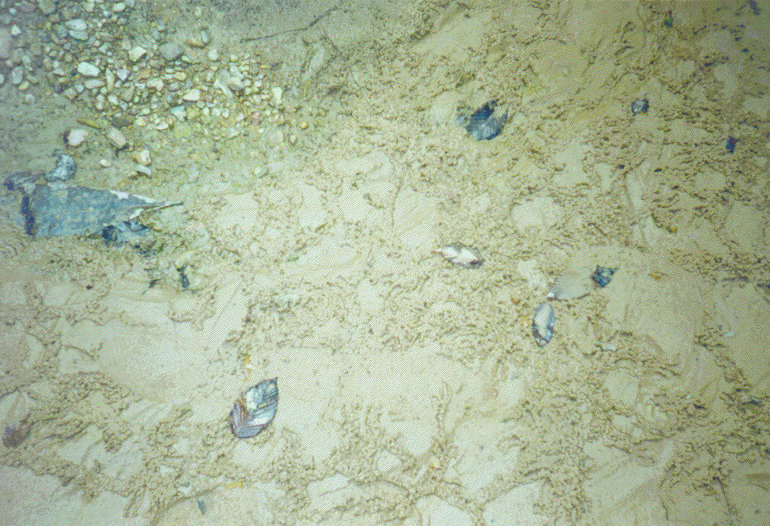 In
this photograph from Clark Creek, the sand deposits occur in the stream
itself. They were deposited when the speed at which the stream was flowing
became too slow to retain sand-sized particles in motion. A few coarser
particles of gravel are also seen in the upper left area of the photo. Sand
in the bottom of the stream is also being reworked by a burrowing organism
creating the meandering trails seen throughout this section of the stream.
In
this photograph from Clark Creek, the sand deposits occur in the stream
itself. They were deposited when the speed at which the stream was flowing
became too slow to retain sand-sized particles in motion. A few coarser
particles of gravel are also seen in the upper left area of the photo. Sand
in the bottom of the stream is also being reworked by a burrowing organism
creating the meandering trails seen throughout this section of the stream.
In this sediment sample, the grains are a little smaller
than in the sand photos above. They only look bigger due to magnification.
Silt-sized sedimentary particles have diameters between 0.0625 and 0.004
mm.
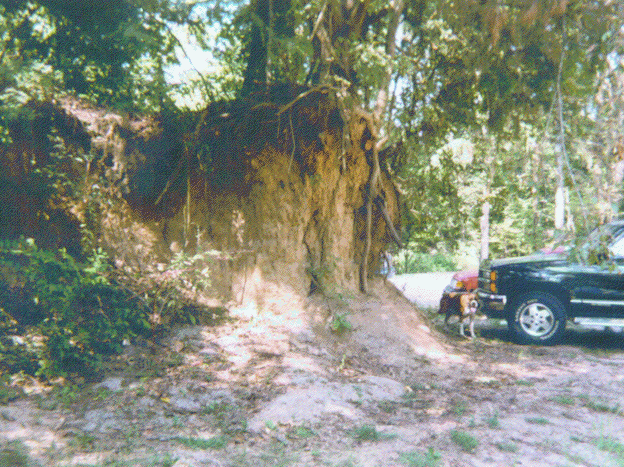 Silt-sized
particles are the main components of the Peoria loess
that caps the hills in the area.
Silt-sized
particles are the main components of the Peoria loess
that caps the hills in the area.
.
In this sample, the flakey nature of clay-sized sediments
is very evident. Clay is the last of the sediments to be deposited by a
stream due to its small grain size. Clays have diameters that are smaller
than 0.004 mm.
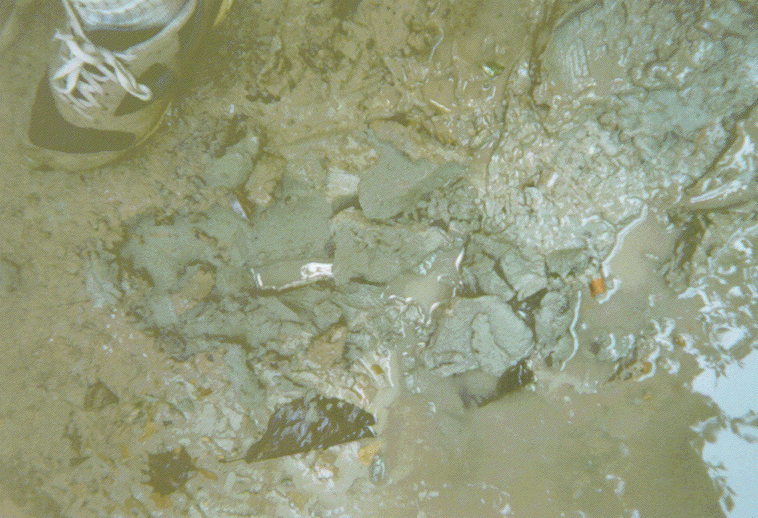 Clays
form an easy to recognize layer dissected by erosion in some segments of
Clark Creek. These blue sediments are part of the unit called the Pascagoula Clay.
Clays
form an easy to recognize layer dissected by erosion in some segments of
Clark Creek. These blue sediments are part of the unit called the Pascagoula Clay.
Sedimentary particles
are often glued together by cements composed of silica, iron oxides, or
carbonates.
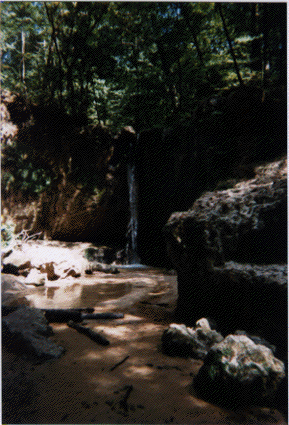 Cemented
sediments in the Clark Creek area form the erosion resistant layers that
are responsible for the waterfalls.
Cemented
sediments in the Clark Creek area form the erosion resistant layers that
are responsible for the waterfalls.
The breakdown
of minerals by weathering often forms new
minerals such as the hematite shown here.
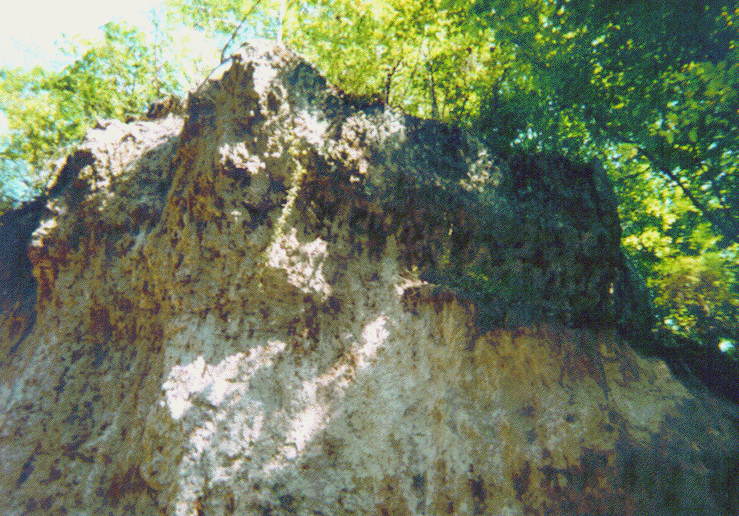 In the field, hematite often appears as
red splotches defining an ancient soil horizon
In the field, hematite often appears as
red splotches defining an ancient soil horizon
Genevieve's |
Clark Creek |
Class |